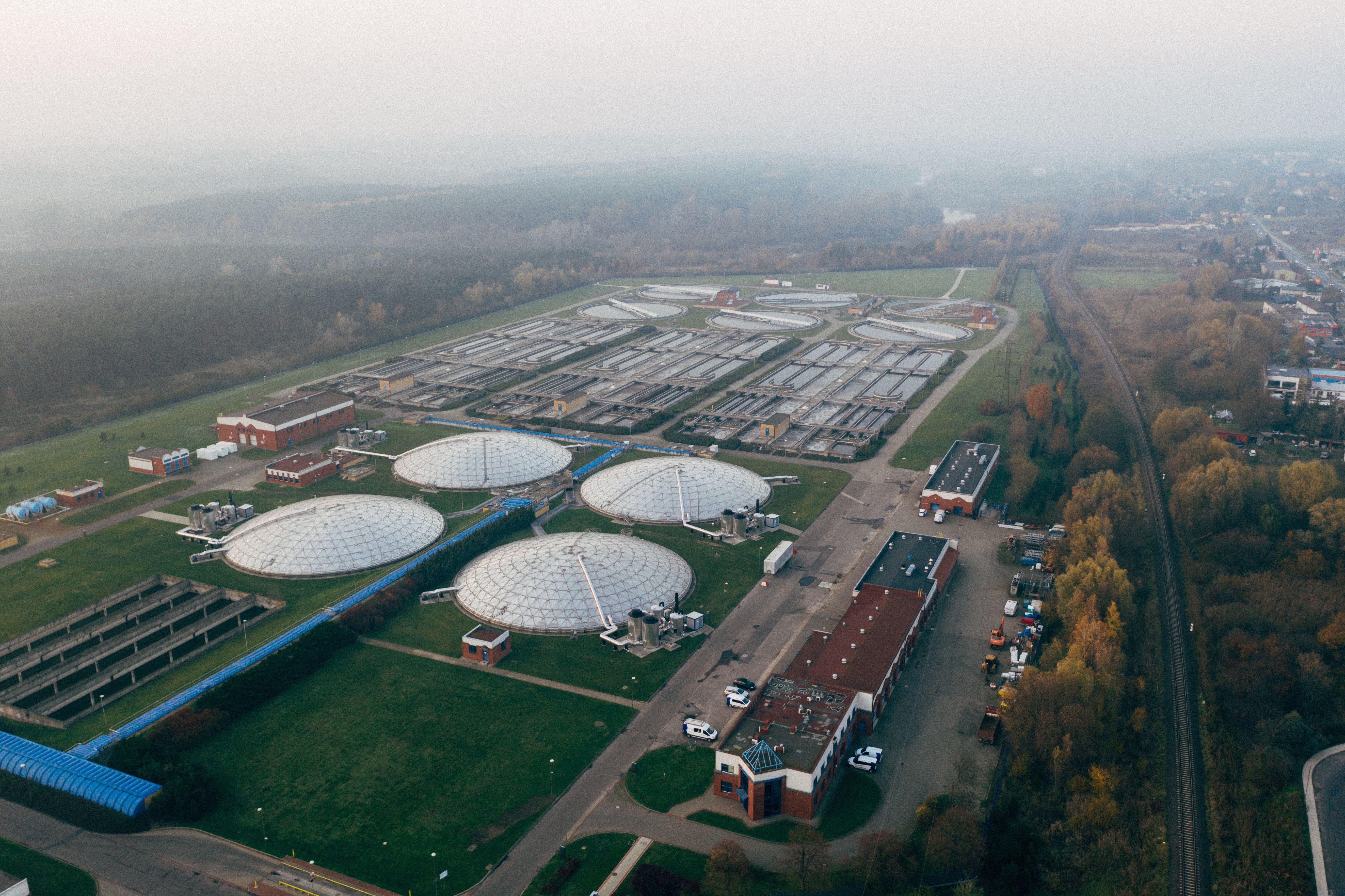Wastewater Accurately Tracks COVID-19 Numbers
A new study confirms this form of surveillance to collect metrics for SARS-CoV-2 to understand infection prevalence on a bigger scale.
This image depicts a wastewater treatment plant. Photo credit: Marcin Jozwiak, Pexels

The public might be familiar now in hearing that public wastewater contains varying levels of SARS-CoV-2, but it's truly not understood how it is being used to denote how much disease prevalence exists in local communities or on a national level.
A new study published in JAMA Network Open points to the importance of utilizing wastewater samples on a bigger scale in identifying COVID-19 data trends, especially as testing has decreased and the disease has become milder over time.
Specifically, the study’s investigators performed a time series analysis of the wastewater of 268 counties in 22 states from January to September 2022, and it demonstrated COVID-19 wastewater metrics accurately reflected high rates of the virus in the early part of last year.
“Plots of the available data for 2022 from the most populous counties in each US Census region demonstrate a direct association between wastewater percentile and absolute SARS-CoV-2 concentrations,” the investigators wrote. “…In AUC analyses incorporating data from all counties, wastewater percentile was closely associated with high reported case (>200 per 100 000; AUC, 0.95; 95% CI, 0.94-0.96) and hospitalization rates (>10 per 100 000 lagged by 2 weeks; AUC, 0.86; 95% CI, 0.84-0.88) in the first quarter of 2022.”
“We found that, in counties that have been collecting and sharing data for some time, the current level relative to a historical maximum was a very good indicator of infection prevalence,” said the study’s lead author Meri R. J. Varkila, MD, Division of Infectious Diseases and Geographic Medicine, Department of Medicine, Stanford University in an interview with Contagion. “We also saw that there has been a change in how well wastewater matched case levels and hospitalizations over time. This change was not due to an inherent change in how wastewater surveillance performs, but more likely because, with high levels of immunity and access to home testing, disease has both become milder and is no longer being reported. Because of this, wastewater surveillance provides the best metric for monitoring how many COVID-19 infections are occurring across communities—it does not tell us, however, how sick people are.”
To determine whether combining both wastewater metrics was associated with high COVID-19 community levels, the investigators used logistic regression accounting for wastewater percentile, percentage change, and the interaction of the 2 variables. They evaluated potential thresholds for infection prevalence, and they compared model predictive ability across probability cutoffs in which the sum of sensitivity and specificity was maximized.
In a sensitivity analysis, they evaluated wastewater percentile performance in small vs large counties, and they also analyzed testing the association of current cases and hospitalization rates with rates of cases and hospitalizations lagged by 2 weeks.
Varkila says the investigators had a few reasons to conduct their study. “We wanted to offer COVID-19 testing to medically vulnerable populations when there were high rates of COVID-19 in the community,” Varkila said. “Because people with COVID-19 often don’t get tested or tested at home without reporting, wastewater surveillance presented a great way to figure out when and where disease rates were high. To do this well, though, we had to figure out the best way to interpret the data. We were also interested in the big picture. Although studies performed at individual sites show that wastewater estimates reflect case rates, no one had yet looked at how wastewater surveillance performed on a national level.”
The authors point out the CDC has invested over $100 million to support wastewater surveillance infrastructure in the United States over the last few years, and have seen an increase of county facilities reporting weekly data. And, Varkila believes there are some real public health benefits to using this type of prevalence surveillance.
"Although the pandemic has been declared “over,” COVID-19 is still around and can pose significant health risks to medically vulnerable populations, like the immunocompromised, the elderly, and the unvaccinated,” Varkila said. “People who are medically vulnerable or unvaccinated, can use wastewater levels to determine whether and when to take extra precautions…authorities can use wastewater to raise awareness around COVID-19 risk in communities, make sure people have access to testing, and determine whether to recommend measures like getting another booster.”
Lastly, Varkila says wastewater surveillance is now being expanded to other infections and viruses such as influenza, and she reminds people of the proverb, “forewarned is forearmed,” in thinking about the approach to understanding virus and disease prevalence.
